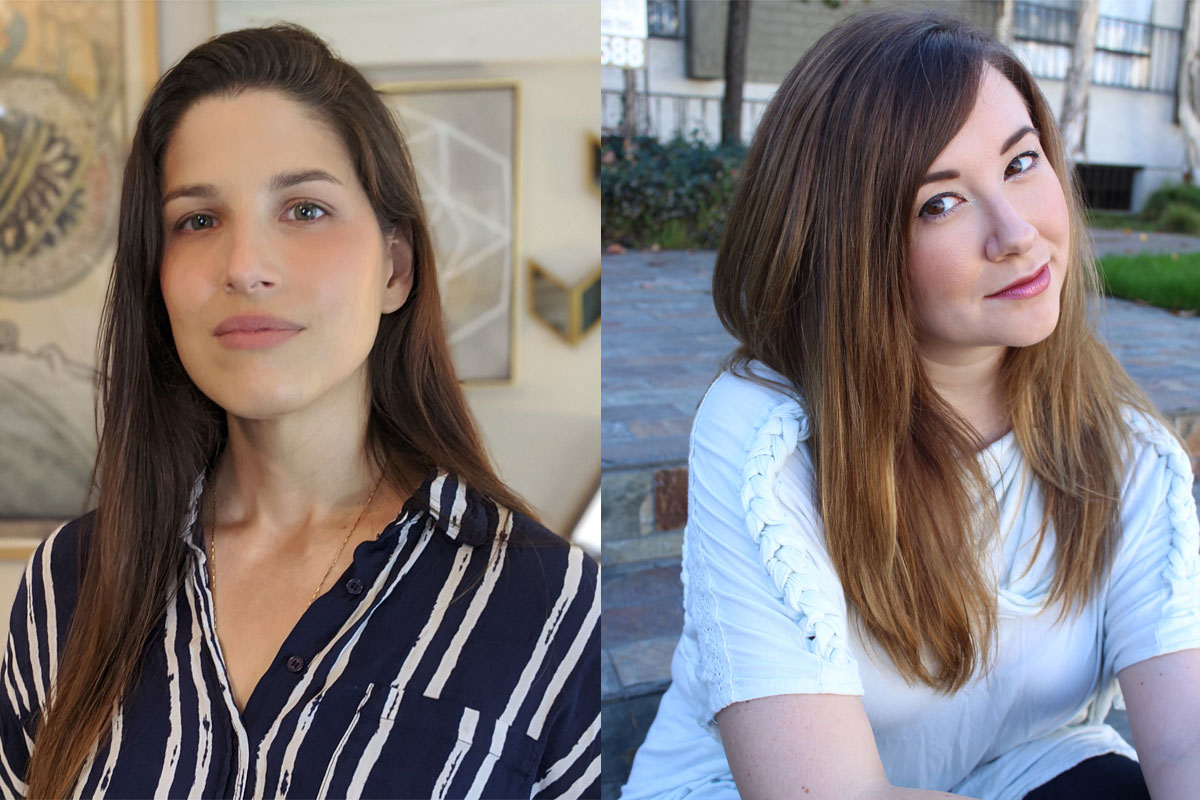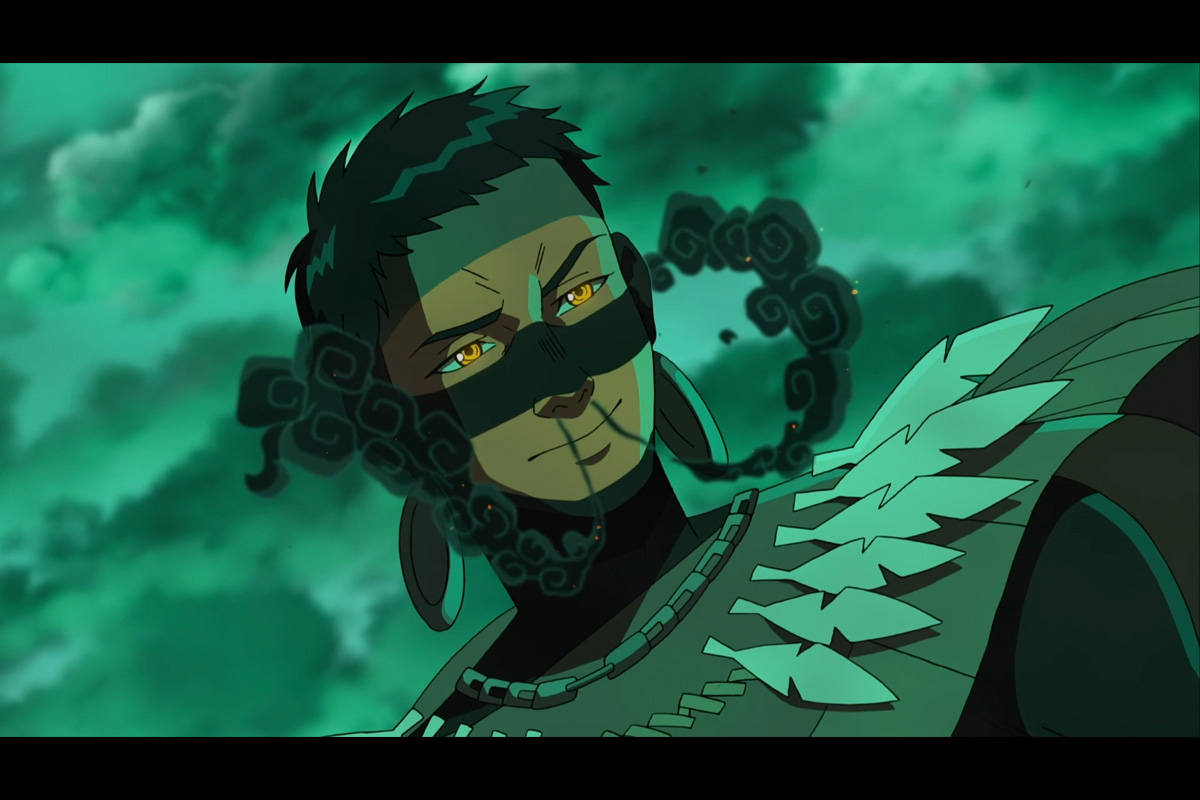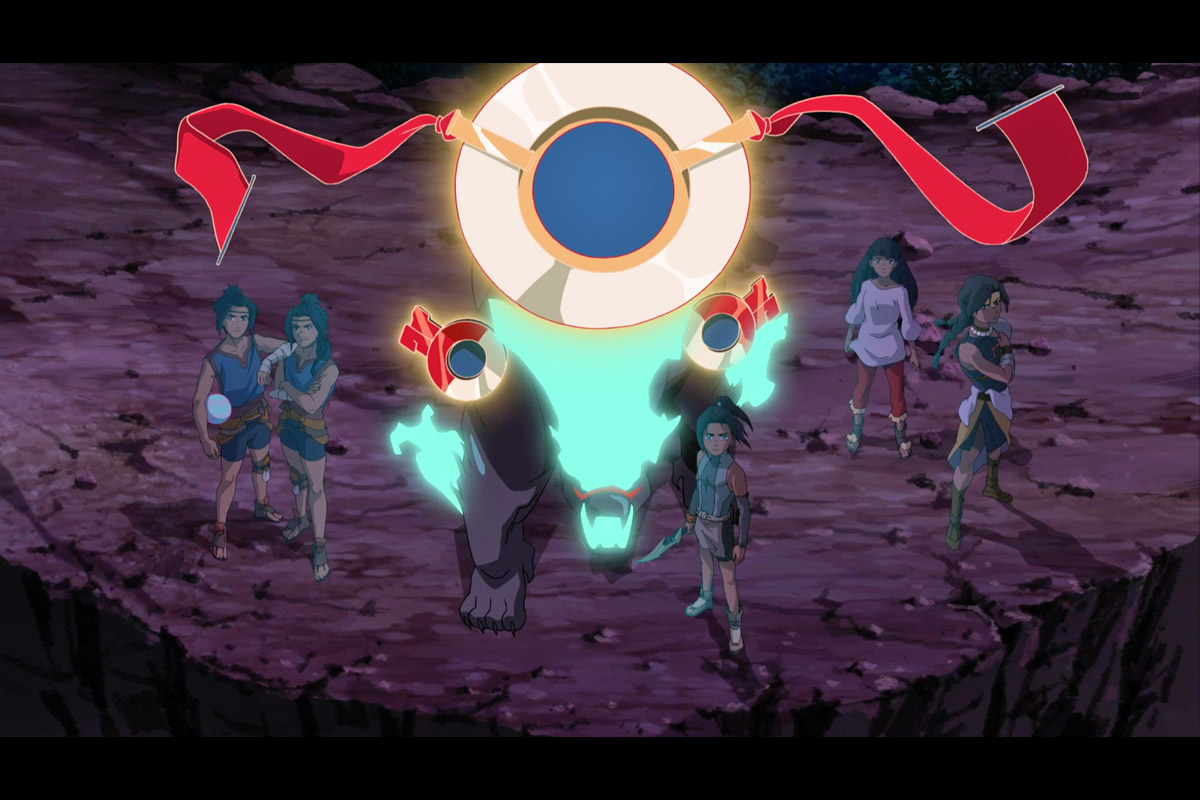Synopsis
Onyx Equinox follows a young Aztec boy named Izel who is saved from death by the gods and is chosen to act as ‘humanity’s champion,’ forced to discard his apathy toward his fellow man and prove humanity’s potential on a journey that will take him across ancient Mesoamerica.
Onyx Equinox
Executive Creator: Sofia Alexander
Executive Producers: Margaret Dean and Sofia Alexander
Producer: Marisa Balkus
Supervising Director: Kuni Tomita
Music Composer: Gustavo Farias
Onyx Equinox is an original action-adventure tale based on Aztec mythology created by Sofia Alexander, a young noteworthy Mexican creator. We came across this interesting project at Pixelatl Festival 2020 as being one of the eight Crunchyroll Originals, which are the new animation series from Crunchyroll that were official revealed in February 2020, and the series is planned for release this November.
Crunchyroll is a large global animation online streaming platform based in the US and recognized as the biggest global Japanese animation (anime) distributor. Crunchyroll Originals are their first challenge in developing new animation titles by themselves and the first slate of that includes not only anime titles produced by Japanese animation studios but also several international projects like Onyx Equinox.
Thanks to José Iñesta, the festival director of Pixelatl Festival, we had the opportunity to hear the story behind the Onyx Equinox project from Sofia Alexander, the executive producer and show creator, and Marisa Balkus, the development and production executive of Crunchyroll Originals.
Interview with Sofia Alexander and Marisa Balkus

Hideki Nagaishi (HN): Could you please let us know the key points of this animation project that you would like to appeal to the prospective audience?
Sofia Alexander: For anime fans, I want them to view Onyx Equinox the way they experienced some of their first anime, like for example, Naruto or Inu-Yasha. Both of those series are deeply connected with Japanese culture, history and mythology. Even if you know nothing about Japanese culture, you connect with the characters and their emotions and struggles, and you become more familiar as you watch, and become more interested in learning about those things. I hope that you have the same draw to Mesoamerican culture as well.
For fans of Western animation, I hope they see the appeal of action-drama animation for adults.
For Mexican fans, I hope they feel at home watching this series and recognize some of the locations we visit. Lots of Latin Americans grew up on anime, so I hope they feel seen in some way by this series, and feel inspired to tell their own stories from their own experiences.
HN: Why did Crunchyroll select the show concept of Onyx Equinox for Crunchyroll Originals? What were the key points for the decision?
Marisa Balkus: The reason we bought the Onyx Equinox pitch was because it expanded the definition of what an anime-inspired show could be, and had timely themes buoying its story. Sofia’s original pitch had strong anime DNA in it, from the early visuals and character designs (which were very CLAMP* – inspired at the time), to the storytelling itself. She set up the series with a very ‘shonen’ hook – a meager young boy is chosen by higher powers to save the world – but then flipped that hook on its head. Izel, our protagonist, doesn’t endeavor to be the strongest, nor is he an optimist who dreams of saving the world or others; he has turned his back on humanity and would rather perish with everyone else. We don’t follow Izel’s journey to be “the best”, but rather, to climb up from the pit of life-ending depression and embrace the imperfection of humanity, while the fate of the world is on his shoulders. It was the timeliness of the show’s theme, centered on a young person with mental illness, apathetic to the state of the collapsing world but unfairly forced to save it, that cemented the show for us.
*: CLAMP is a very successful group of female Japanese manga artists in Japan, known for developing a variety of hit manga series. Many of their manga works have been adapted into animation, which also have been getting very popular in Japan, including the world-renowned Cardcaptor Sakura and Tsubasa: Reservoir Chronicle.

HN: If possible, could you please let us know the main production studio of the series, and the reason behind deciding on that studio?
Marisa Balkus: The main production entity was Crunchyroll Studios itself. It was one of our first in-house productions. We did the writing, design, storyboarding and direction in-house – basically, everything up to the animatic stage – then worked with Korean studios Tiger Studio (Castlevania) and DR Movie (who’ve done everything from Avatar: The Last Airbender to outsourced work for Studio Ghibli) for the animation production.
While it would’ve been awesome to find a studio partner in Japan, in general, it’s difficult for foreign entities to lock down available production pipelines in Japan. Additionally, this was a show that required a huge amount of historical attention to detail in all facets of production that would’ve proved difficult to manage from afar. The way we mitigated this was by deliberately requesting the teams at Tiger Studio and DR Movie who handled animation for Japanese outsourcing, as opposed to those who handled U.S. outsourcing.
HN: Sofia, could you please let us know your career path that led to you creating Onyx Equinox, in brief?
Sofia Alexander: It’s been over a decade-long journey! Growing up, I loved anime for its wide variety of stories. I loved drawing and wanted to become a ‘mangaka’ (manga-artist) like so many other anime fans my age. By the time I moved to the United States when I was 16, I knew I wanted to study art. Then in college, I found myself feeling homesick for Mexico. For one of my very first art classes, I made a series of comic strips featuring a young boy and a jaguar going on adventures in the jungle near where I grew up.
The story evolved into something a lot more complex over the years. I pitched it as a graphic novel at the end of my senior year and almost sold it, but something told me it wasn’t the right move. When my wife and I moved to Los Angeles, after quite a bit of struggle and then finally getting my foot in the door at Cartoon Network and Hasbro, I had the opportunity to pitch some ideas to my rep. At the time I didn’t think anyone would want to hear about Onyx Equinox, so I almost didn’t even pitch it, but my wife kept telling me I should do it anyway. I guess I got lucky when I pitched to Marisa, because she was so excited about it and helped us out every step of the way.
HN: Where did the initial idea of the story come from? What kind of difficulties did you face throughout your journey in developing the whole story, and how did you deal with them?
Sofia Alexander: The initial spark came from my grandfather. He was very proud of our indigenous heritage and wanted to make sure all his grandkids were, too. I grew up in Quintana Roo, where there are tons of archaeological sites, so he took us there to teach us everything there was to be learned. I remember learning that there was an immeasurable loss of knowledge and culture when the Spanish colonized Mexico, and wondering and imagining what those places looked like before all of that. That was one of the challenges as well, because there is only so little concrete knowledge of that time, and even what we do know may have been exaggerated or made up by the Spaniards.
Nevertheless, Onyx Equinox is a fantasy. I built the story on mythology and tried to make the real-life settings as faithful to history as possible.
Much of it comes from my own lived experiences as well. I don’t want to get too personal, but a lot of Izel’s emotional journey stems from hardships I endured over the years I’ve been building this story. Lots of the creative team had a lot to add in terms of emotional depth as well. I really hope the audience connects with the characters in Onyx Equinox through these kinds of universal human experiences.

HN: What part of your creation through the production process of the series was the most exciting or boosted your motivation the most?
Sofia Alexander: I would get excited whenever new art came in! We had so many amazing designers and storytellers working on this series that there was just a constant stream of new and exciting things. I was really happy to see team members getting really invested in research as well, and offering ideas based on that. Then when we started getting animation back, it was surreal to see my characters who I’d known for so long finally moving and speaking.
Actually, there’s one part in episode one that’s really emotional. Sometimes you get lost in all those building blocks that when you finally see the whole thing coming together, it really hits you. When we were mixing sound effects for that moment, with the sound and music and everything, suddenly I felt like I was actually just watching the show and I started crying!
HN: What is the most important characteristic of the visual design of the characters and universe for the story, and why?
Sofia Alexander: Colors! I have to say, the color styling of the show is one of the things I am most proud of. Not only do certain colors represent certain facets of the story, but in general I wanted to capture the natural beauty of Mexico.
One of the things that bothered me about a lot of stories that take place in pre-Hispanic Mesoamerica is that when you see some of the famous pyramids, they look just like they do now, as archaeological sites or ruins. These were huge, thriving cities with hundreds of thousands of people. The pyramids were colorful at one time! So, it was really inspiring to imagine some of the sites I knew so well as populated cultural hubs.

HN: Could you please let us know the story behind your collaboration with the music composer?
Sofia Alexander: It’s a pretty cool story, actually. First of all, I should say I am obsessed with musical scores. Music has always been a huge part of my creative process no matter what I’m doing. This is a skill I learned from my dad and my time sitting at his studio while he worked, just listening to Yanni or Mike Oldfield, and asking each other what we imagined with the music.
Back in 2010, Mexico celebrated its bicentennial. At the time, I was working on Onyx Equinox as my senior project comic. Televisa released a series of videos called Estrellas del Bicentenario that showcased the beautiful things about each Mexican state, and the thing that impressed me most about them was the music. I kept them on loop while I worked because the music inspired me so much. I found out the composer was a guy named Gustavo Farias, and I remember saying to my wife, “When Onyx Equinox is a show, he is going to compose the music.”
Fast forward about 8 years, I say I want Gustavo to compose the music for the show, and as it turned out, he lives in Los Angeles now as well! He was on board immediately and honestly, I couldn’t imagine it any other way. It was destiny.
HN: Lastly, we would like to hear about the business strategy of Crunchyroll. Crunchyroll has been growing its business globally with its dedication to delivering anime titles to anime fans worldwide. What is the main objective of Crunchyroll in developing original animation series with western creators such as with Onyx Equinox?
Marisa Balkus: This is a twofold answer. As we’ve seen over the last five years, anime is exploding in popularity in the west, to the point where it’s becoming a household medium. One of the main goals of our western pipeline is to welcome new anime fans by creating gateway content that bridges the gap between the “anime-curious” geek and the core anime fan. Ideally, we want to convert those “anime-curious” folks – the film fan who may be familiar with Hayao Miyazaki or Satoshi Kon, or the genre TV fan who’s maybe seen Cowboy Bebop – into full-time anime fans. For instance, if we can get a new fan to come to Crunchyroll for Onyx Equinox and then stick around and discover Fullmetal Alchemist: Brotherhood or The Promised Neverland… Then we’ve done our job.
The other consideration for working with worldwide creators is to expand the scope of stories and perspectives being featured in anime-inspired shows. We now have a generation, particularly in the west, that has grown up living and breathing anime, thanks in part to Toonami, Crunchyroll, and other providers. Anime has always stretched the boundaries of storytelling and production values by featuring a wider array of tones, sophistication of plotting, genres, cinematic inspiration, etc. that aren’t beholden to the demographic constraints of the U.S. industry. Since we have a generation of creators that are students of anime, why not give them a chance to feature their stories – no matter their background – in a way that pays homage to the medium that most influenced them? It’s exciting that the Toonami kids are now the ones making the shows.



